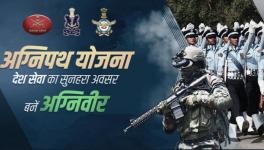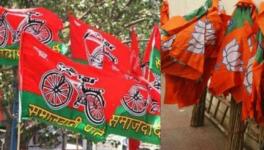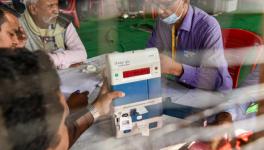UP Elections: The Glory of Varanasi’s Unique Handmade Brass Pichkari Units is Fading Away
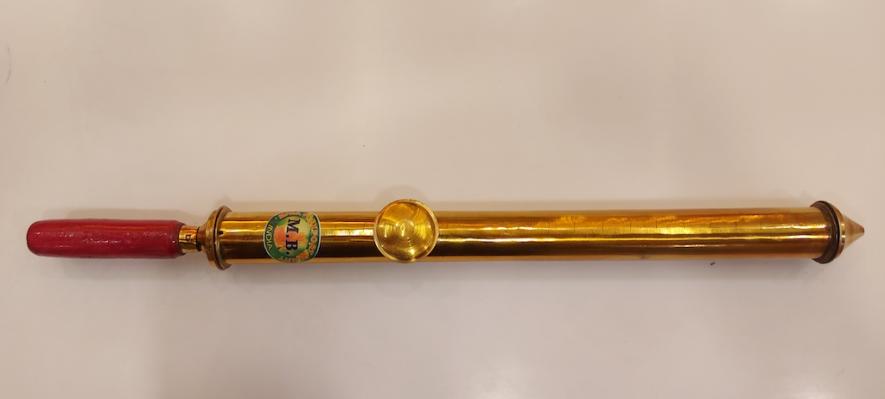
Varanasi (Uttar Pradesh): Once a thriving industry in Kashi (ancient name of Varanasi), manufacturers of brass pichkaris (pressure water gun), mainly used during the Holi festival, are fighting a battle for survival. Persistent high inflation is one of the biggest challenges being faced by this small-scale industry.
Because of high input costs due to the rise of raw material prices, this traditional, unique and beautiful craftwork is finding it difficult to compete with imported plastic pichkaris that are sold at much lower prices. While the former is priced at Rs 1,800-2,000/piece in the retail market, the latter is available at a price ranging between Rs 100-800.
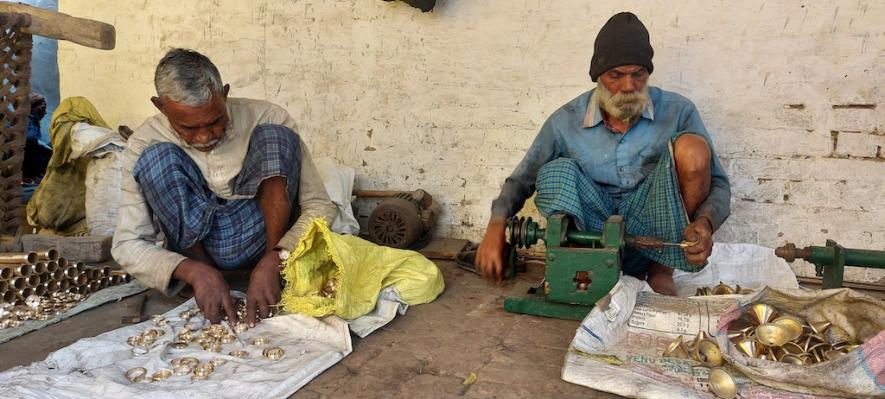
The district once had 36 manufacturing units of the brass water pressure guns, but these have now reduced to just one or two. Another reason this industry is set to wither away in the near future is because most of the artisans are elderly who are not able to work longer hours.
“The industry collapsed because of two reasons: high inflation that brought the demand down, and the younger generation who did not inherit this art form from their elders,” Rajendra Prasad Maurya, a resident of Varanasi’s Ayar village, who is its sole manufacturer, told NewsClick.
MANUFACTURING PROCESS
Brass is an alloy of copper and zinc. It is produced by the cementation process where ores of the two metals in certain proportion are heated together until zinc vapour is produced which has a solid state of reaction with copper.
The molten brass is then poured into moulds of different shapes, with a base made of a mixture of roasted clay and burnt lubricant oil. As it cools, it takes a solid shape.
“Brass pichkaris are largely hand-made and handcrafted. The entire manufacturing involves extremely limited use of machines,” he said.
The cylinder of the pichkari is made of brass sheets, which are purchased from the market. The big sheets are cut into pieces, rolled and tied with wire. The joint is manually soldered without using any machine.
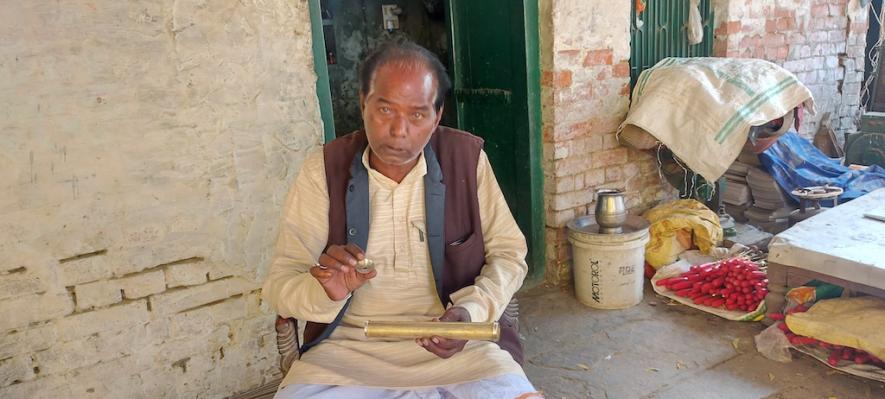
The cylinder is then polished with the help of machines in such a way that the joints cannot be spotted. The piston is made of brass rods, which are readymade.
FROM HOLI TO AGRICULTURE USAGE
In addition to making the festival of Holi vibrant, the pressure water gun is used for a variety of other works, especially spraying pesticides in farming.
“It is used for spraying pesticides on foodgrains, vegetables, singhara (water caltrop or water chestnut) and mango trees. Its demand is high in Assam where tea growers use it to wash away the pest’s larva, which destroys tea leaves. It is also used in construction to sprinkle water on the newly built walls and pillars, as it helps avoid wastage of water,” said Maurya.
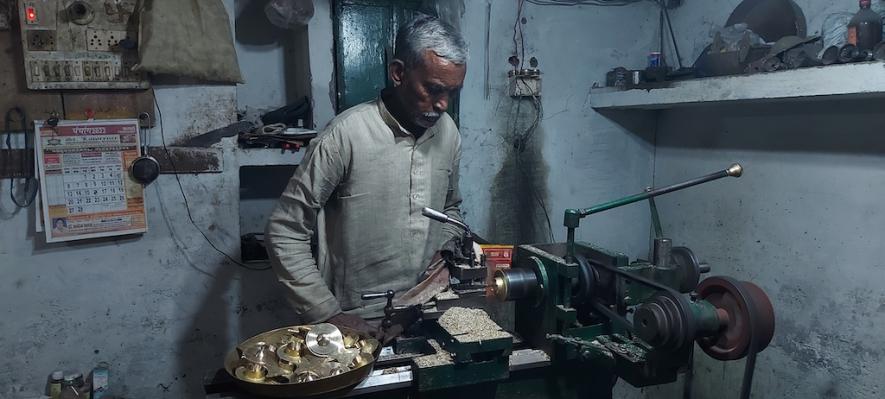
This golden coloured water gun, with 16-inch length, two-inch diameter, lasts for generations to come since it is made of pure brass. “Brass utensils, if used with proper care, can last for decades, which is a value for money in the true sense. These are easy to carry and clean. These can be a gift items for any occasion,” he added.
THE TRADE ARITHMETIC
The maker of this pressure water gun does not invest a single penny from his pocket on its manufacturing. It is made on orders. The traders provide required raw materials, such as copper, zinc and brass rods and sheets. The manufacturer only charges for his labour cost, which is calculated in inches.
“We don’t necessarily make brass from copper and zinc. Sometimes, we are provided with brass items to melt and use these as per our requirements. We charge the traders our labour cost at the rate of Rs 30 per inch of manufacturing,” Maurya said.
FORMIDABLE CHALLENGES
Maurya said he does not take manufacturing orders of more than 6,000-7,000 pieces a year as he has only five artisans who are engaged in this industry for several decades.
“All the craftsmen have grown old; so, they cannot be burdened with heavy workload. If I increase the work volume, we need more and more people, who are not available. The work force I have cannot do overtime to meet deadlines. Therefore, I only accept work orders that can be delivered on time without overburdening the artisans,” he said.
A resident of Ayar village, Kanchan Ram, 68, has been working in this industry for over 30 years. He earns Rs 6,000 per month as the workshop operates throughout the year.
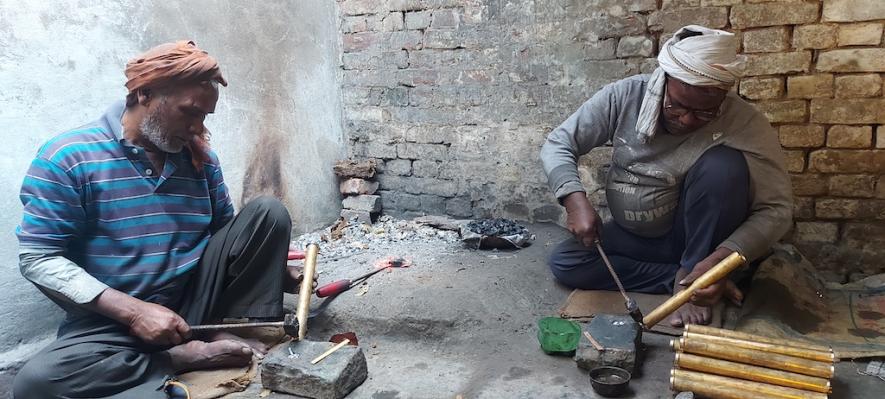
“Earlier, we were flooded with orders and had to work in stretched shifts to ensure delivery of the consignment in time. The work orders have witnessed a sharp decline over the years. Still, we had to refuse because of our limited workforce. There is no one in my family to take this legacy forward as my only son is a graduate who is now working a driver with the additional district magistrate,” he told NewsClick.
Lalji Patel, 69, learnt the art by working with the industry for over two decades. “I have been associated with this cottage industry since 1966, when the monthly wage was Rs 15, which kept growing with time. No one in my family has inherited this art. My four sons are working in different sectors,” he added.
NO EFFORT FOR REVIVAL
Despite being a GI (Geographical Indications)-registered product, the brass pressure gun is not covered under the state government’s One District, One Product (ODOP) scheme.
“This industry could have been revived and developed as a heritage of this city. But sadly, there seems to be no effort of that sort at least so far. The craft is dying and the industry is almost dead,” said Maurya.
The ODOP scheme is aimed at encouraging, reviving and promoting traditional arts and craft, which are unique to Uttar Pradesh. It claims to help Micro, Small & Medium Enterprises or MSMEs acquire financial assistance from recognised banks, fair pricing and provide training to improve technological skills to compete with marketers globally.
Sadly, the revival and promotion of such small industries are not included in the agenda of any political party.
ELECTORAL MATHEMATICS
Varanasi is going to polls on March 7 in the final phase of the seven-phased ongoing Assembly elections in the state.
Registering victory on all eight Assembly segments in Varanasi is a matter of prestige for the ruling Bharatiya Janata Party (BJP) as the district is the Lok Sabha constituency of Prime Minister Narendra Modi, who has been camping here for the past three days.
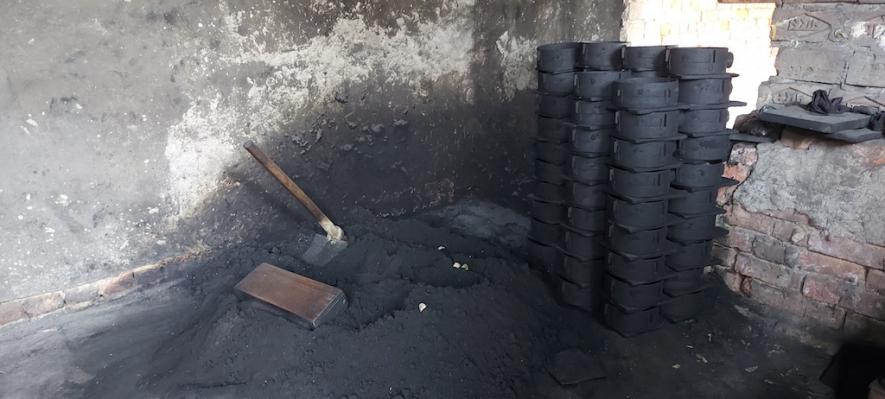
The BJP-led alliance won all these seats in 2017, when one seat was contested by the Suheldev Bharatiya Samaj Party of Om Prakash Rajbhar — who has walked away from the alliance and is contesting this election in alliance with the Samajwadi Party. The Anupriya Patel-led Apna Dal had won one seat. This time, Apna Dal is contesting two seats and BJP the rest six.
Both SP leader Akhilesh Yadav and Congress leader Priyanka Gandhi Vadra, and even West Bengal Chief Minister Mamata Banerjee, are expected to camp in Varanasi next week, promising a high-voltage poll campaign. Akhilesh Yadav and Mamata Banerjee are also planning a joint rally and road show in Varanasi on March 3, while Priyanka Gandhi is also expected to arrive here the same day.
Get the latest reports & analysis with people's perspective on Protests, movements & deep analytical videos, discussions of the current affairs in your Telegram app. Subscribe to NewsClick's Telegram channel & get Real-Time updates on stories, as they get published on our website.










